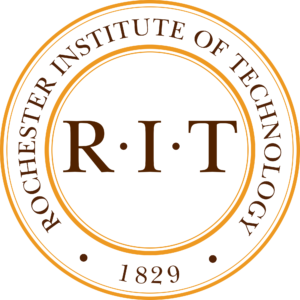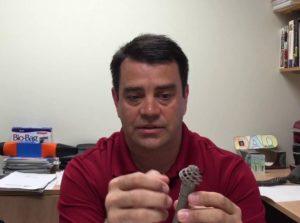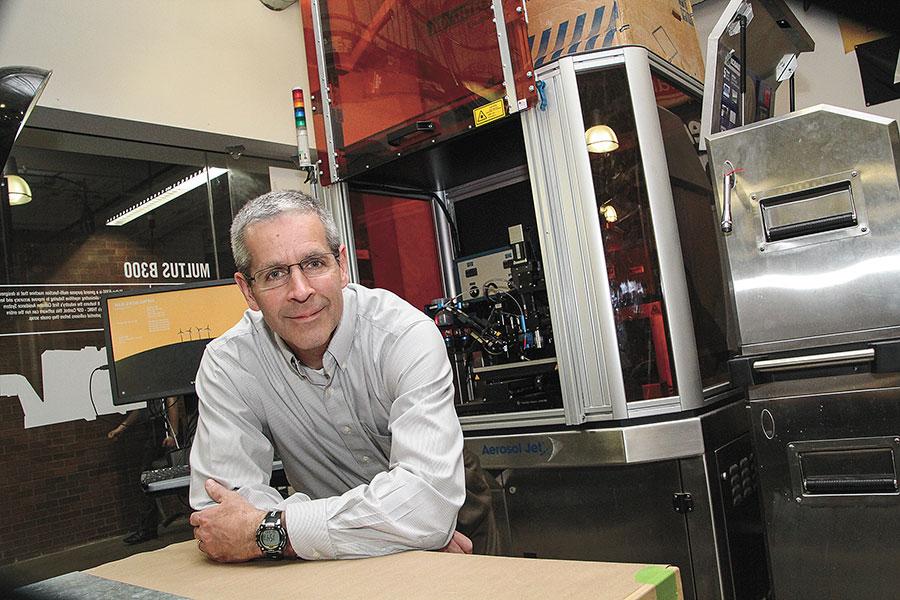 As 3D printing continues to play a more important role in the development of products, scientific research and low-volume manufacturing there has been higher demand for well-funded educational programs and facilities. For many young people who will join the workforce of the future, being able to be competitive is going to require them to be fully educated in the principles of modern manufacturing technology. Grade school classes as young as kindergarten are using 3D printing technology as the centerpiece to modern STEM education, and that trend is continuing all the way up to our universities. Not only has the government started to financially support these new efforts to modernize, but local businesses are also investing in what it hopes to be a well-trained new workforce.
As 3D printing continues to play a more important role in the development of products, scientific research and low-volume manufacturing there has been higher demand for well-funded educational programs and facilities. For many young people who will join the workforce of the future, being able to be competitive is going to require them to be fully educated in the principles of modern manufacturing technology. Grade school classes as young as kindergarten are using 3D printing technology as the centerpiece to modern STEM education, and that trend is continuing all the way up to our universities. Not only has the government started to financially support these new efforts to modernize, but local businesses are also investing in what it hopes to be a well-trained new workforce.
Additive manufacturing technology on university campuses is not new of course; many engineering and manufacturing labs have had 3D printers for years. However schools like New York’s Rochester Institute of Technology (RIT) are starting to see the benefit of having a dedicated program just for 3D technology. The school recently secured a state grant to establish an AMPrint Center that its director, engineering professor Denis Cormier, hopes will help RIT become a new leader in the development of advanced 3D printing technology and materials. The AMPrint Center’s facility hasn’t even been finished yet and they have already racked up an impressive list of future and prospective corporate partners and sponsors.
“We are thrilled that the state has awarded this prestigious designation to RIT and our consortium partners. We believe additive manufacturing can become a signature industry in our regional economy, and we expect this center to contribute to significant advances in these technologies,” said RIT President Bill Destler.
 As an up and coming 3D printing materials startup, Zero Valent NanoMetals, will likely take full advantage of the AMPrint Center and its attached tech business incubator. The startup’s founder and chief technology officer Kenneth Reed is also one of the center’s research associates, and will be developing advanced metal materials in the facility. Of course any technology that he develops on the RIT campus will need to be licensed to his company, but that is a small price to pay for access to a state of the art additive manufacturing lab. Arrangements like this have been a part of academia for decades, and patents and technology developed on campuses has long been a primary source of revenue for many higher educational institutions. The new AMPrint Center will help ensure that RIT is capable of attracting students, researchers and businesses who are developing the technology that will revolutionize industry and manufacturing.
As an up and coming 3D printing materials startup, Zero Valent NanoMetals, will likely take full advantage of the AMPrint Center and its attached tech business incubator. The startup’s founder and chief technology officer Kenneth Reed is also one of the center’s research associates, and will be developing advanced metal materials in the facility. Of course any technology that he develops on the RIT campus will need to be licensed to his company, but that is a small price to pay for access to a state of the art additive manufacturing lab. Arrangements like this have been a part of academia for decades, and patents and technology developed on campuses has long been a primary source of revenue for many higher educational institutions. The new AMPrint Center will help ensure that RIT is capable of attracting students, researchers and businesses who are developing the technology that will revolutionize industry and manufacturing.
And it isn’t just startups that will benefit, established companies can use the facilities at the AMPrint Center to develop their own technology and products. The benefit being that they don’t need to maintain their own specialized equipment for a project that may only need it for a few months or years. Not only does this arrangement benefit the university by bringing in funding that is often in short supply these days, but it offers unique educational opportunities for students. The company simply pays RIT while they develop technology at their AMPrint Center, while allowing students to participate, giving them invaluable working experience. Companies can also partner with RIT students, researchers and staff to develop advanced products on campus.
“The consortium’s university partners include RIT, Clarkson University and SUNY New Paltz and corporate partners Xerox Corp., GE Research, Corning Inc., Eastman Kodak Co. and MakerBot. Smaller, regional companies will also collaborate with the center,” notes RIT of the participation in the effort.

RIT assistant professor of engineering Ron Aman explaining metal 3D printing to the Democrat & Chronicle.
Xerox Corp. is already developing a working relationship like this with RIT, as one of the grant’s consortium members. They are working at the center on the development of 3D printing inks and multi-ink 3D printing processes, as well as a 3D printer that uses polymer powder and an electronically charged cylinder. Harbec, a precision parts manufacturer, will be benefiting from the AMPrint Center by using the facility to test out metal 3D printing technology. By using the metal 3D printers at RIT, the company can make sure that the technology will enhance their business before they commit to purchasing their own machines, which often range in price from $700,000 to $1 million. And milling machine manufacturer the HardingeGroup has tasked RIT assistant professor of engineering Ron Aman with developing a hybrid machine that can both mill and 3D print. The converted milling machine would have a rotating cutter toolhead that can be temporarily replaced with a laser head that can produce 3-D parts.
The AMPrint Center, officially called the Additive Manufacturing and Multi-Functional Printing Center for Advanced Technology, was made possible by a state grant that Cormier applied for and was granted last year. The grant provides the consortium with $921,000 a year for up to ten years, and the center’s operational budget will also be supplemented with contributions made by the companies working at the AMPrint Center. The budget also includes enough to pay Cormier and a staff of four to manage and maintain the facility.
“The purpose of the AMPrint Center is to work with industry in applied research pertaining to 3-D printing and additive manufacturing, with the ultimate aim of generating economic benefits in the state,” Cormier told the Democrat & Chronicle.
Currently most of RIT’s 3D printing equipment is housed in the Earl W. Brinkman Machine Tools and Manufacturing Laboratory at RIT’s Kate Gleason College of Engineering, which will be moved once the new 3,200-square-foot center is completed this summer. In addition to the annual state funding, RIT also received an additional $500,000 for construction of the center. RIT is also investing $2 million of its own on the construction of the AMPrint Center as well as the attached 1,500-square-foot startup incubator. Additionally, they are expecting to invest about $3.5 million in new 3D printing equipment over the next five years to add to the more than 100 3D printers that they already have.
“Rochester is quickly reclaiming its rightful title as the image capital of the world, especially with RIT leading the way on this exciting new 3D printing and manufacturing center. I thank RIT, Empire State Development, and all partners involved for helping to take 3D printing to the next level through this collaborative effort to create advanced products and high-tech jobs right here in our community,” said Sen. Rich Funke, 55th District.
You can learn more about RIT’s Additive Manufacturing and Multi-Functional Printing Center for Advanced Technology here. Let’s discuss their technological goals over in the RIT 3D Printing forum at 3DPB.com.
Subscribe to Our Email Newsletter
Stay up-to-date on all the latest news from the 3D printing industry and receive information and offers from third party vendors.
You May Also Like
Gorilla Sports GE’s First 3D Printed Titanium Cast
How do you help a gorilla with a broken arm? Sounds like the start of a bad joke a zookeeper might tell, but it’s an actual dilemma recently faced by...
Nylon 3D Printed Parts Made More Functional with Coatings & Colors
Parts 3D printed from polyamide (PA, Nylon) 12 using powder bed fusion (PBF) are a mainstay in the additive manufacturing (AM) industry. While post-finishing processes have improved the porosity of...
$25M to Back Sintavia’s Largest Expansion of Metal 3D Printing Capacity Since 2019
Sintavia, the digital manufacturing company specializing in mission-critical parts for strategic sectors, announced a $25 million investment to increase its production capacity, the largest expansion to its operations since 2019....
Velo3D Initiates Public Offering in a Bid to Strengthen Financial Foundations and Drive Future Growth
Velo3D (NYSE: VLD) has been among a number of publicly traded 3D printing firms that have attempted to weather the current macroeconomic climate. After posting a challenging financial report for 2023,...































